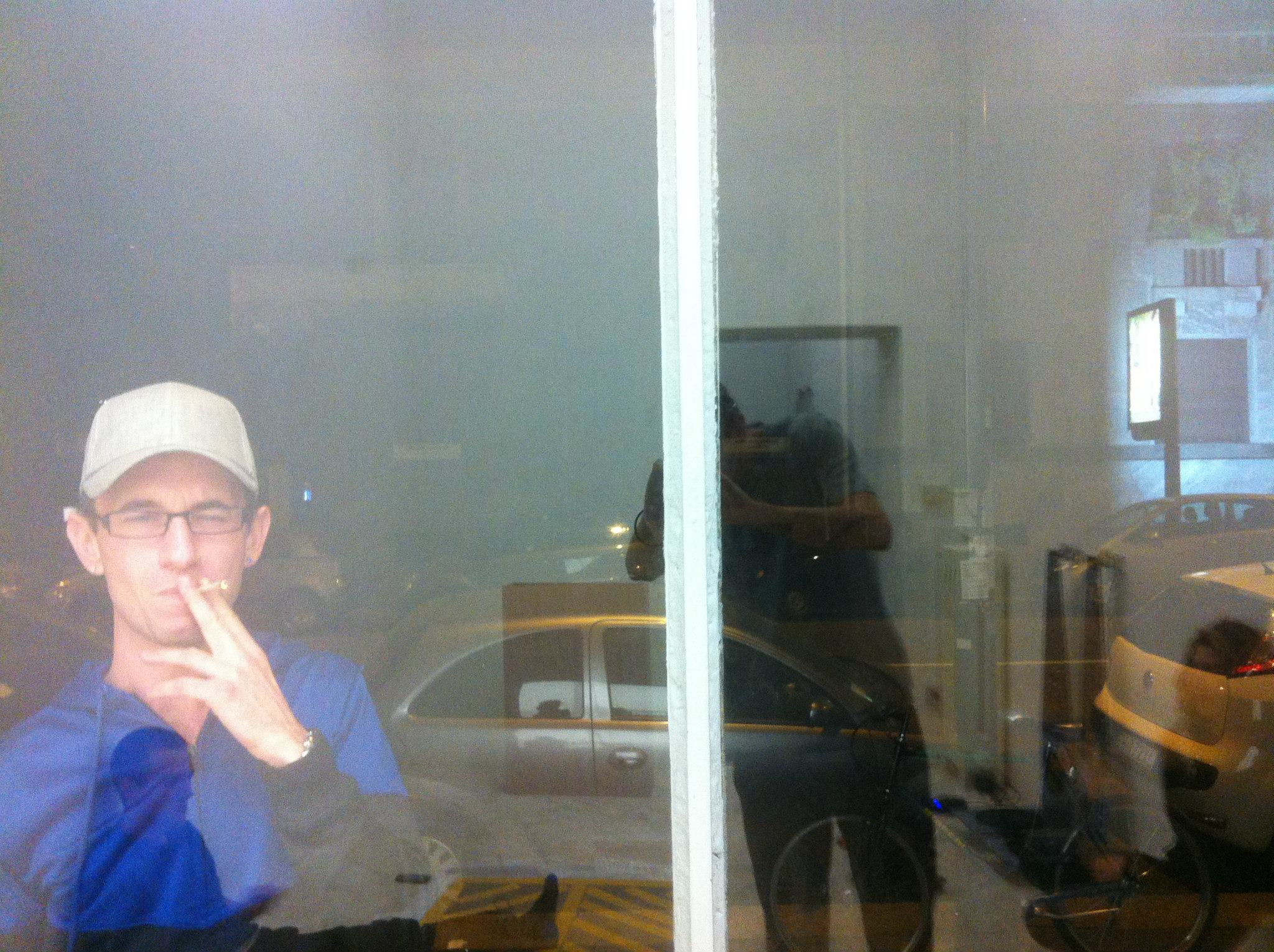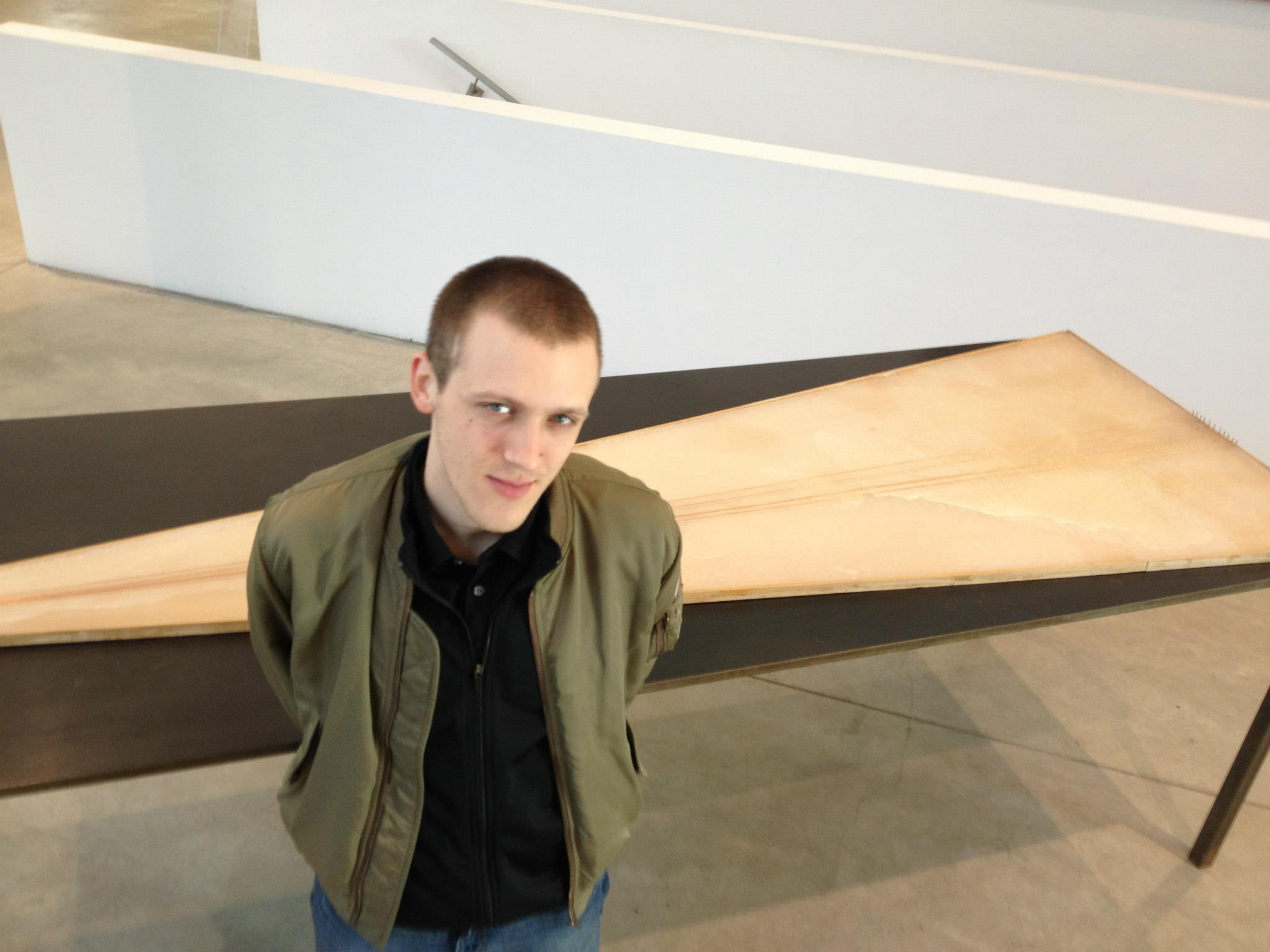From Motel Lucie to Gasconade: Alessandro Agudio, Beatrice Marchi, Andrea Romano, and Davide Stucchi
This is how Alessandro Agudio, Beatrice Marchi, Andrea Romano, and Davide Stucchi created Motel Lucie and Gasconade, in Milan.
We wouldn’t call Motel Lucie a movement, and we are neither going to put a label on it, nor trying to spot fleeting similarities in art practices of the artists who activated this space a few years ago in Milano, that is Alessandro Agudio, Beatrice Marchi, Andrea Romano, and Davide Stucchi – art labels are old tricks reducing diversity to homogenisation. However, this artists are from the same generation and since 2010, when they were all still attending the art school, they have been successfully cooperating to projects, exhibitions and publications which have become far from negligible episodes of the city’s recent art history.
Motel Lucie: A quasi-group of artists
This story starts with four names, which are those of Alessandro Agudio (1982), Beatrice Marchi (1986, here is a link to our writing about Beatrice Marchi), Andrea Romano (1984, here is a link to our writing about Andrea Romano) and Davide Stucchi (1988, here is a link to our writing about Davide Stucchi visiting Frida Kahlo exhibition at the Musée de l’Orangerie in Paris). They all studied art in Milan. Both Davide Stucchi and Beatrice Marchi were pupils of Alberto Garutti at Accademia di Brera, while Alessandro Agudio and Andrea Romano studied at that Academy, but with other professors. Nevertheless they were also follower of Garutti, who certainly had some influence on them and in March 2011 organized an early group show at the art space of Unicredit bank, in Piazzale Cordusio. Titled Carte Blance #3, the exhibition included Beatrice Marchi, Davide Stucchi, Anna Mostosi and Derek Maria di Fabio, who played a pivotal role in Motel Lucie, the very first collective project operated by the group.

Started in 2010 in Lambrate, which at that time was a blossoming area at the eastern outskirts of Milan where a leading contemporary art gallery such as Massimo De Carlo had opened its white-cube-style new venue, Motel Lucie was in fact a branch of Lucie Fontaine, a fictional personality calling itself ‘a French based art employer’ who in 2007 had opened a space in that area intended as a meeting place for the artistic community. From time to time Stucchi and Derek di Fabio were assisting Lucie Fontaine, and at some point they were invited to set an artistic program for that space. Quickly a group merged giving birth to Motel Lucie. They were still finishing their degree thesis, but they were already aware of the importance for them to generate experience and networking. With the help of some other friends, including Mattia Tradati, Luca De Leva, Jacopo Mazzetti, and obviously collaborating with Andrea Romano, Alessandro Agudio and Beatrice Marchi, they organized exhibitions, short residencies for artists, happenings and concerts. As Davide Stucchi recalls now ‘everything was very fluid at that time. It was a year of open artistic experimentation’. The fresh spontaneity animating those days still lives in Motel Lucie’s blog, an early online art publication keeping track month by month of the pretty intense activity of the group and its growing network.
The last event operated by Motel Lucie took place in November 2011, when it was part of Artissima Lido, the off-site programme of Artissima art fair in Turin. The section was inspired and curated by two talented artists a generation older – Christian Frosi and Diego Perrone. Meanwhile Davide Stucchi, Beartrice Marchi, Mostosi and De Leva rented a flat together at the Dergano district, north of Milan. Alessandro Agudio and Derek di Fabio were renting a flat beside them. Their friendship became even closer, and sooner than later a step forward in their career was about to be marked.

Gasconade
Gasconade opened in October 2011 and the original concept was by curator Michele d’Aurizio, with the involvement of Luca Castiglioni and Davide Stucchi’ points out Beatrice Marchi. Following the example of Castillo Corrales and Balice Hertling – an artist-run space and a commercial gallery sharing the same venue during the early days of Belleville district, in Paris – Gasconade shared the small space of a former tire dealer located near Piazzale Lavater, Milan, with the brand new gallery of Federico Vavassori. More talented artists stepped on the scene, such as Lupo Borgonovo, Marco Basta, Dario Guccio, Daniele Milvio, Diego Marcon (here is the link to our writing about Diego Marcon and his video titled Ludwig) and Giangiacomo Rossetti. They empowered the group with more creative energy and ideas. Gasconade was intended to run that physical space only for three years, but that was enough to give to many promising talents their first significant solo exhibition. It was the case of Romano, Marchi, Basta, Agudio and Marcon, Francesco Joao Scaravada (here is our interview with Francesco Joao), but also Eva Fabbris (a curator) and Lorenzo Senni (a musician). According to Romano, ‘we had a more professional approach, aimed at making a step into the contemporary art arena and creating connections with the international art community’. Effectively Gasconade hosted also exhibitions with foreign artists such as Camille Blatrix and Kaspar Mülller, and had a couple of effective off-site exhibitions at La Maison Rouge, in Paris, and at 1m3 in Lausanne; while Rosa Titanica was a kind of collaborative piece by Alessandro Agudio, Basta, Borgonovo, Beatrice Marchi, Andrea Romano and Davide Stucchi hosted in Rome between 2013 and 2014, in a flat owned by Daniele Milvio.

Gasconade doesn’t have an exhibition space at the moment, but it is still alive. Its current main project is a collective novel titled ‘Le petit jeu’ that has been supported by ASK, Art, Science and Knowledge – an interesting research centre at Bocconi University which promotes cultural planning and cultural institutions management activities. The novel, which is still under way, was presented by Michele d’Aurizio at the last edition of La Quadriennale in Rome – here the article we wrote in that occasion.

Seven years after this story began all of the artists in the original group are living up to expectations and enlightening the European contemporary art scene. Andrea Romano is represented by two respected galleries such as Vistamare, in Pescara, and Gaudel de Stampa in Paris. During MiArt week 2017 he is going to have a solo presentation at Collezione Iannaccone. These same days Davide Stucchi and Dario Guccio are curating an exhibition dedicated to outsider artist Eugenio Barbieri at Armada, another very active artist-run space in Milan – whose Viola Angiolini cross path with late Gasconade’s years. Davide Stucchi is currently represented by Deborah Schamoni, in Munich. His first solo at the gallery is going to open next May. Beatrice Marchi is currently attending the Master programme at Hochschule für bildende Künste in Hamburg and is represented by Downs and Ross in New York. Next May she will be part of a promising group exhibition at L’inconnue gallery, Montreal, including also Elena Bagaki, Athena Papadopoulos, Hannah Perry, Anna Uddemberg. Downs and Ross is also representing Daniele Milvio, who is opening his solo show there on 30 April. During MiArt Alessandro Agudio is having a solo show at Fanta Spazio, a lively not-for-profit emerging exhibition space in Milan run by Gloria De Risi, Alberto Zenere and Alessio Baldissera. Ermes Ermes, a gallery based in Vienna, is going to dedicate him a solo booth at the upcoming edition of Granpalazzo art fair, in Zagarolo, near Rome. Note for Italian collectors and art dealers: xenophilia is provincialism’s worst effect.
February 19, 2024
